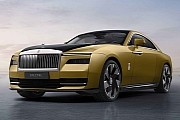history
What's more luxurious and opulent than a Rolls Royce? Well, nothing else really, except maybe gold-plated Porsche, but since they don't have a whole line of those yet, people tend to stick to Rolls Royces. Born out of the partnership between Charles Stewart Rolls and Frederick Henry Royce, the company started out in 1906 in Britain.
Right from the start, they set out to build “the best car in the world” as the Silver Ghost was named. Attention to detail and outstanding performance meant that the Silver Ghost enjoyed success right from its launch in 1906.
As with many other car manufacturers, during the First World War, Rolls Royce was turned to war production, but instead of building cars, they build airplane engines like the Eagle which was used by half of of the Allied fighters.
After the war, the company continued research in the engine department and came up with the “R” engine which was used in planes and cars to set new world records. Post war developed cars include the Phantom I and the Phantom II increasing production. Because the demand increased, Rolls Royce had to open up a second plant in America, in Massachusetts.
Another successful move was the acquisition of Bentley in 1931 which would later prove beneficial for both brands. For a long time Rolls Royces and Bentleys would be mechanically identical.
The R engine was eventually developed into the praised Merlin engine. It was during the Second World War that the Merlin really proved itself, as all Hurricanes, Lancasters and Spitfires involved in the Battle for Britain would be fitted with such engines. Royce would not live to see the success of his engine as he died in 1933, aged 70.
Car production resumed at Rolls Royce after the conflagration and, as sales were increasing steadily, the company opened up new plants in Crewe, Chesire along the one in Derby. The former would become the company's formal home starting with 1946. Models from this period include the Silver Wraith, the last car to have its body built by an independent coachbuilder. After this, all Rolls royce cars would be built completely in-house.
The 40s and 50s were prosperous times for the Rolls Royce company and that is why, in 1966, the manufacturer decided to further expand its influence and buy out Bristol Siddeley, the other great aero engine manufacturer in Britain. In 1950 the Phantom IV, the most exclusive Rolls Royce ever was introduced. Only 18 cars were produced and all were delivered to royalty and heads of state. The Silver Cloud I and II also hail from this period, followed in the 60s by the Silver Cloud III and Phantom VI.
Starting with the 70s, Rolls Royce comes to a period of financial decline, owned in part to a failed contract to complete a new jet engine, the RB211. The government had to step in and in 1971 the company was nationalized but that didn't solve the problem. In 1973 the air and car industries were split by the government and the latter sold in order to keep the airplane industry rolling.
Rolls Royce Motors was bought in 1980 by Vickers PLC. The Silver Spirit Rolls Royce was developed in 1981, the first car under the new brand. It followed a whole new line, aimed at a younger market and it was much safer and met the emissions regulations.
The Vickers takeover would end in the 90s, as the company was put up for sale again. The omst likely buyer seemed to be the Germans over at BMW, as they already had some ties with Rolls Royce, providing parts for Bentley cars. But at the last minute they were outbid by Volkswagen, which brought things into an awkward situation. VW had rights to the Spirit of ecstasy mascot and the shape of the radiator grille, but BMW held the rights to the double R logo and the name of the brand.
The two companies arrived at an understanding since VW really wanted Bentley and decided to sell the right for the mascot to BMW for 40 million pounds. Staring with January 2003, the two brands, Rolls Royce and Bentley, which went a long way back would be now separated, Bentleys being produced by volkswagen and Rolls Royces by BMW.
That was also the year Rolls Royce launched the new Phantom, a car which has managed to draw out the new direction of the company for the coming century.
expand

















